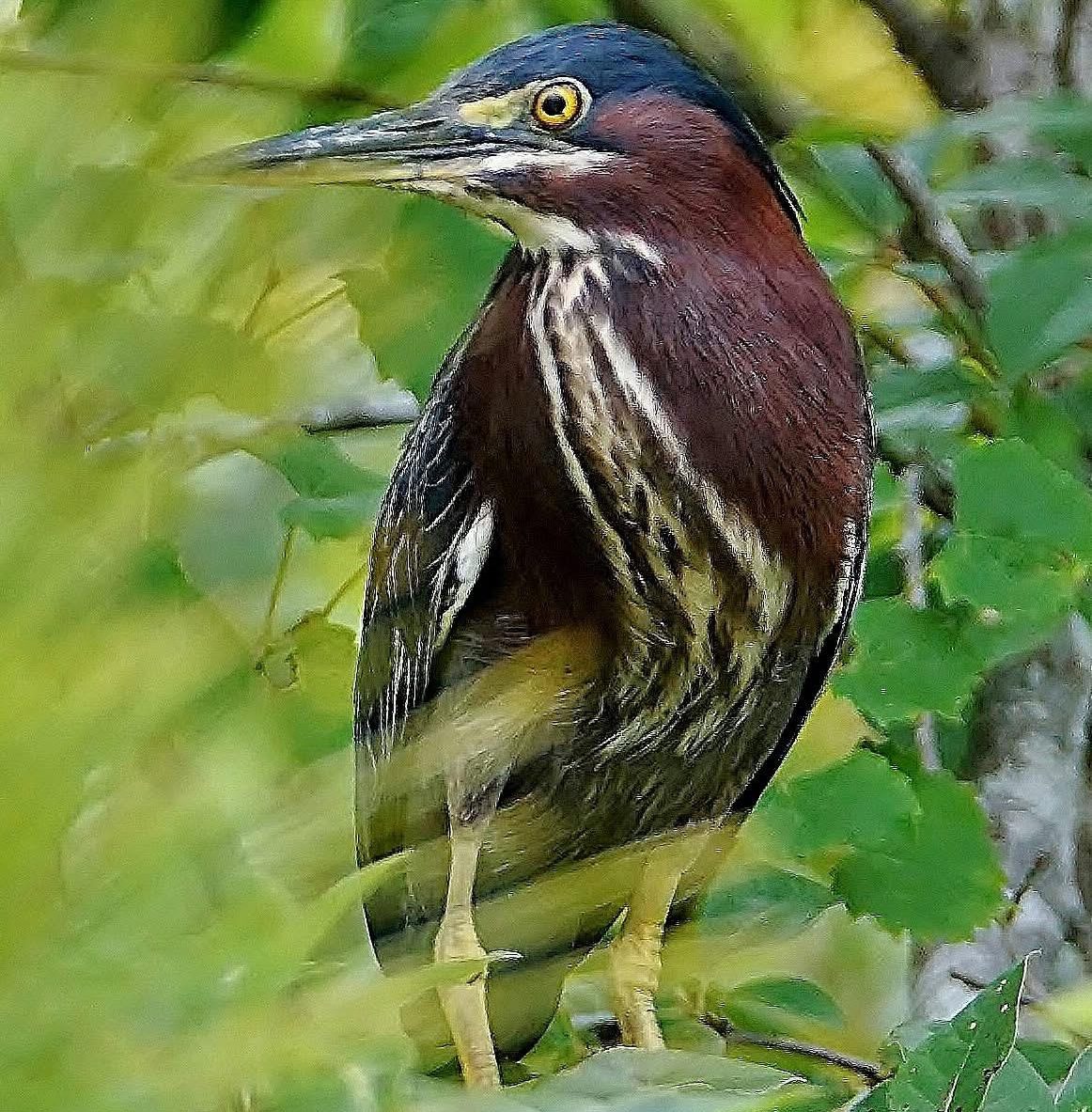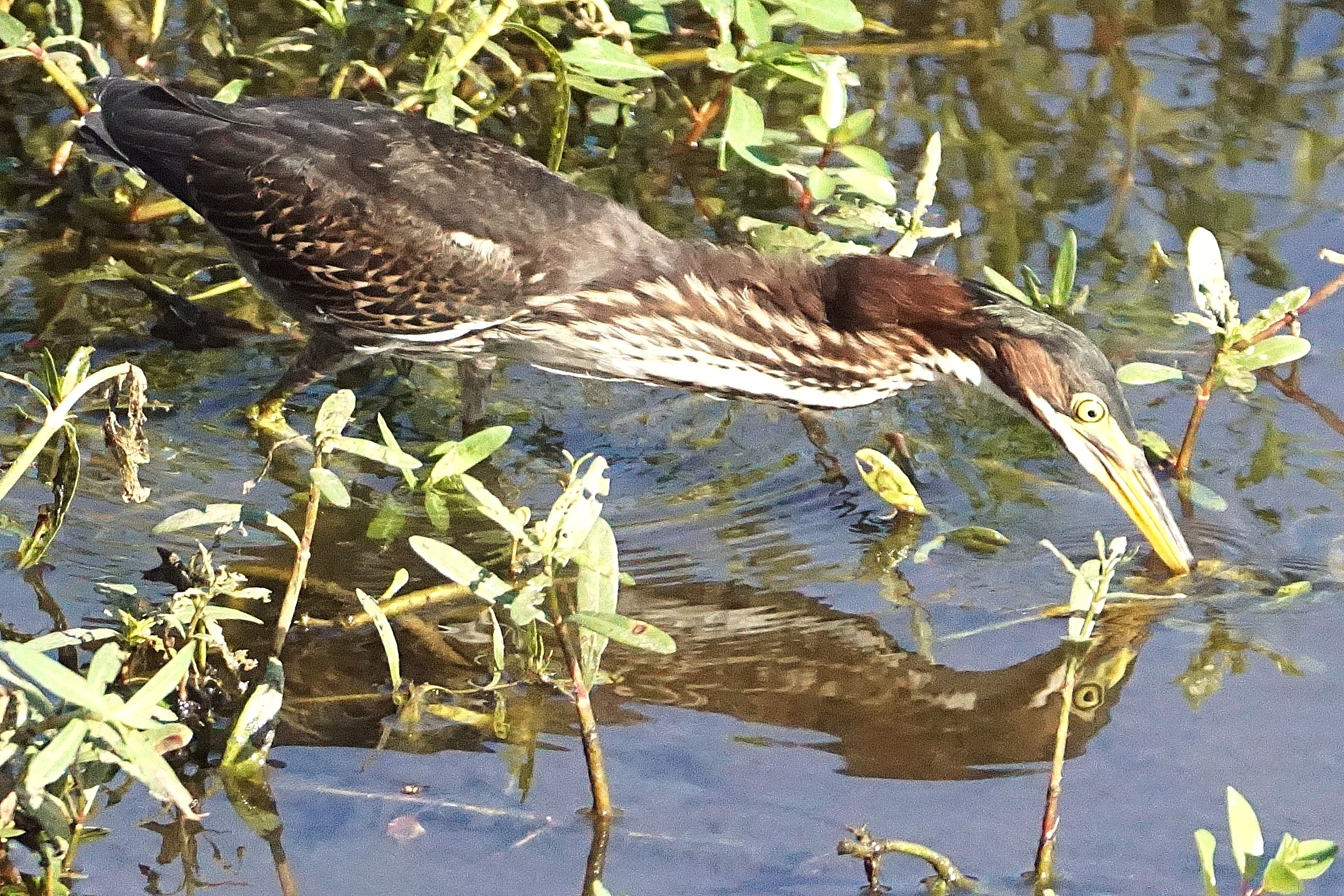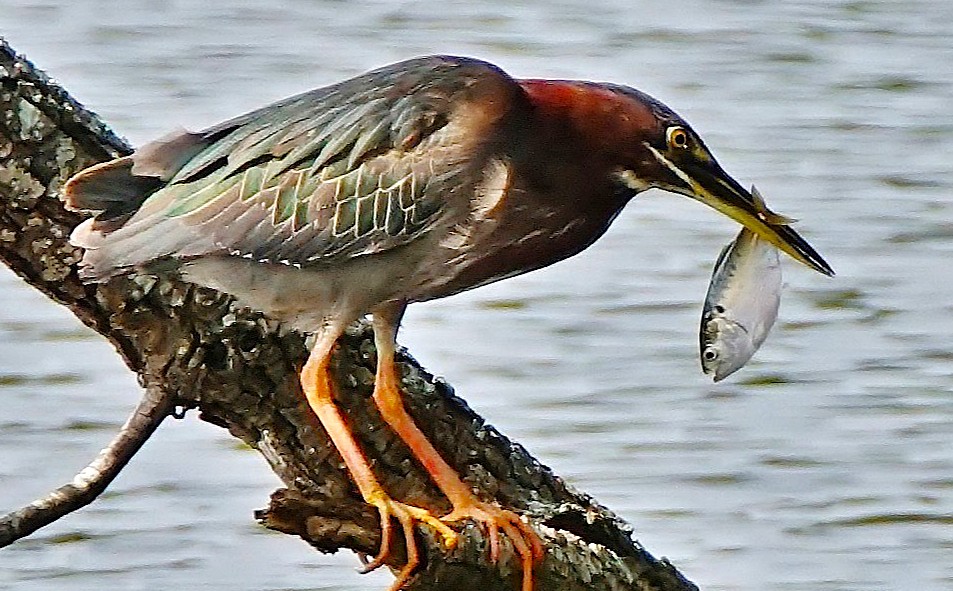Even casual bird watchers are acquainted with our larger wading birds that are easily seen stalking prey along ditches, beaches, and other wet places. Great Egrets, Great Blue Herons, Snowy Egrets, and even Little Blue Herons are out in the open, sticking out like statues. But one of the smallest of our wading birds lurks in the shadows, if you know where to look.
Green Herons, Butorides virescens, are as common as our other waders. And although hard to spot, they are quite striking when you do see one. Adults have dark green/blue backs and heads, with chestnut bodies, and yellow ringed eyes. They are stockier that other waders and appear hunched over when seen slowly walking or sitting still. But as with other waders, they can rapidly extend a long neck to snag a fish, snail, or other critter. They are lightning fast!
Unlike other waders, Green Herons hunt along the shallow edges of wetlands, often lurking under vegetation, rarely venturing far into the water. Their diet is varied, consisting mostly of fish, but can also include insects, spiders, small crustaceans, lizards and even small rodents. Their bills are daggers but are also great tweezers when grabbing their prey. They feed throughout the day but are rarely seen flying like other waders. And when they do fly, they are not as graceful. They do extend their necks a bit, as do most herons and egrets, but spend much shorter times in the air.
They typically nest near the wetlands that they frequent, usually in tree branches over or near the water’s edge but have been reported deeper in adjacent woodlands. Their nests are not much more than a flimsy collection of twigs. A breeding pair care for 3-5 eggs and can produce more than one brood a year. Finding a nest is no easier than finding these birds, but Green Herons are successful throughout their range, breeding throughout most of the eastern U.S., the Pacific coastline, Central America, and the Caribbean.

In winter, they retreat to the warmer parts of their range, including south Mississippi and the northern Gulf coast region. Even then, reports submitted through some of the bird reporting apps are questioned, I suspect because of these heron’s reclusive nature and not always getting a clear view of the bird. For my friend Curtis Makamson, finding these birds is part of his diligence looking within the places where these birds and other creatures live. His images shared here speak to the beauty of Green Herons and their success in foraging for their favorite foods.
It does take a bit longer to find these secretive birds in the wetland places that you may visit. But, taking the time to look closely will be rewarded with seeing a great hunter and a beautiful creature.
Hope to see you in our great outdoors!
Photos courtesy of Curtis Makamson.





